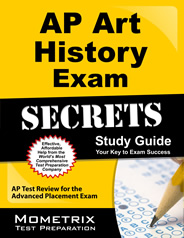AP Art History Exam Study Guide
Advance Placement Art History (AP Art History) is an Advanced Placement Art History course and exam offered by College Board. AP Art History is intended to permit understudies to look at real types of imaginative expression significant to an assortment of societies apparent in wide mixture of periods from present times into the past. Understudies get a capacity to inspect masterpieces discriminating, with insight and affect-ability, and to understandable their musings and encounters. The fundamental theme is European Art, with spotlights on African, Hindu, South and East Asian, and Islamic Art. Ancient workmanship has been expelled from the educational program.
Organization Of The AP Art History Exam
The AP Art History exam is partitioned into two areas: various decision, and free-reaction, with both segments having two sections. The numerous decision area incorporates 115 inquiries that must be replied in 60 minutes. In Part An, understudies have 20 minutes to answer five arrangements of inquiries in light of shading pictures. In Part B, there are 85 inquiries that must be replied in 40 minutes, some of which don't relate to any particular picture, and include the fundamental reviewing of truths. Different inquiries, allude to high contrast pictures inside of the test booklet.
The free-reaction area incorporates two 30-moment article inquiries (Part An) and six 10-moment paper inquiries (Part B). In Part A, Students must react to the prompts, refering to two cases of gems that mirror the quick's subject. In Part B, every short paper inquiry is in view of a gem and/ or citation from an essential source/ record. For citation based inquiries, understudies must select a proper masterpiece to examine.
Scoring Of The AP Art History Exam
The numerous decision segment of the exam is justified regardless of 40% of an understudy's score. The free-reaction is justified regardless of 60%. Each accurately addressed different decision inquiry is justified regardless of one point. Starting 2011, wrong and excluded inquiries don't influence the crude score.[2] For the free-reaction segment, the six short answers are justified regardless of 35% of the aggregate evaluation, and each is evaluated on a size of 0 to 4. At last, the two long expositions are each evaluated on a size of 0 to 9, totaling 25% of the evaluation.
While the criteria shifts from year to year, accepting a "5" from the ETS more often than not involves procuring around 70% of the aggregate focuses on the test, or having a raw score of 140.
Study Guide And Test Preparation For AP Art History Exam
A Complete AP Art History Exam Study Guide that includes sample questions, test tips and a complete study plan prepared by a team of expert and dedicated researchers. Cost-effective and qualified exam help from a committed exam preparation company.
AP Art History Exam Secrets (printed book)

